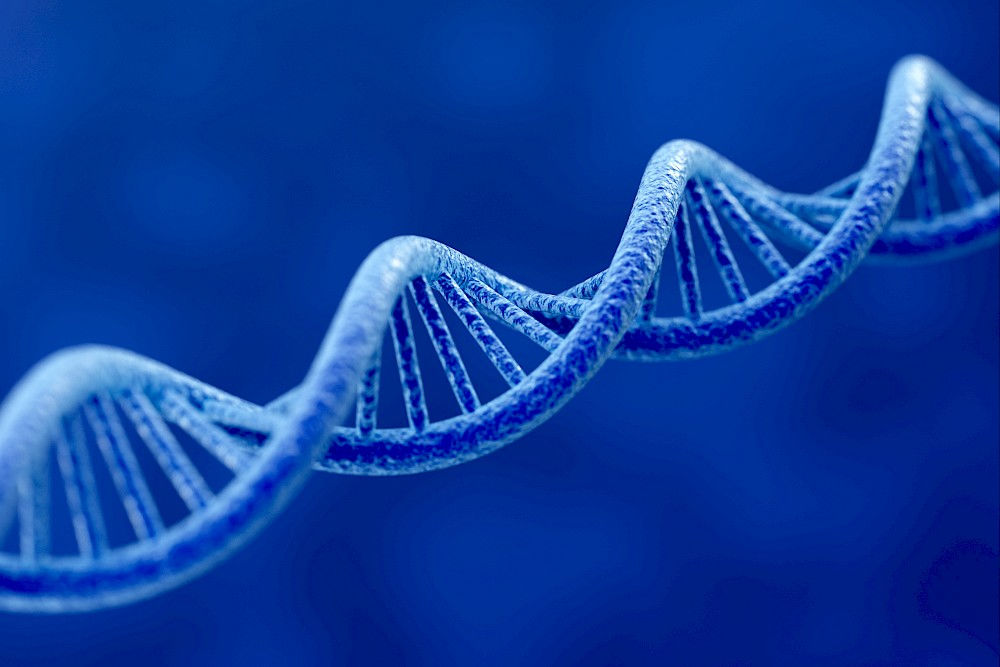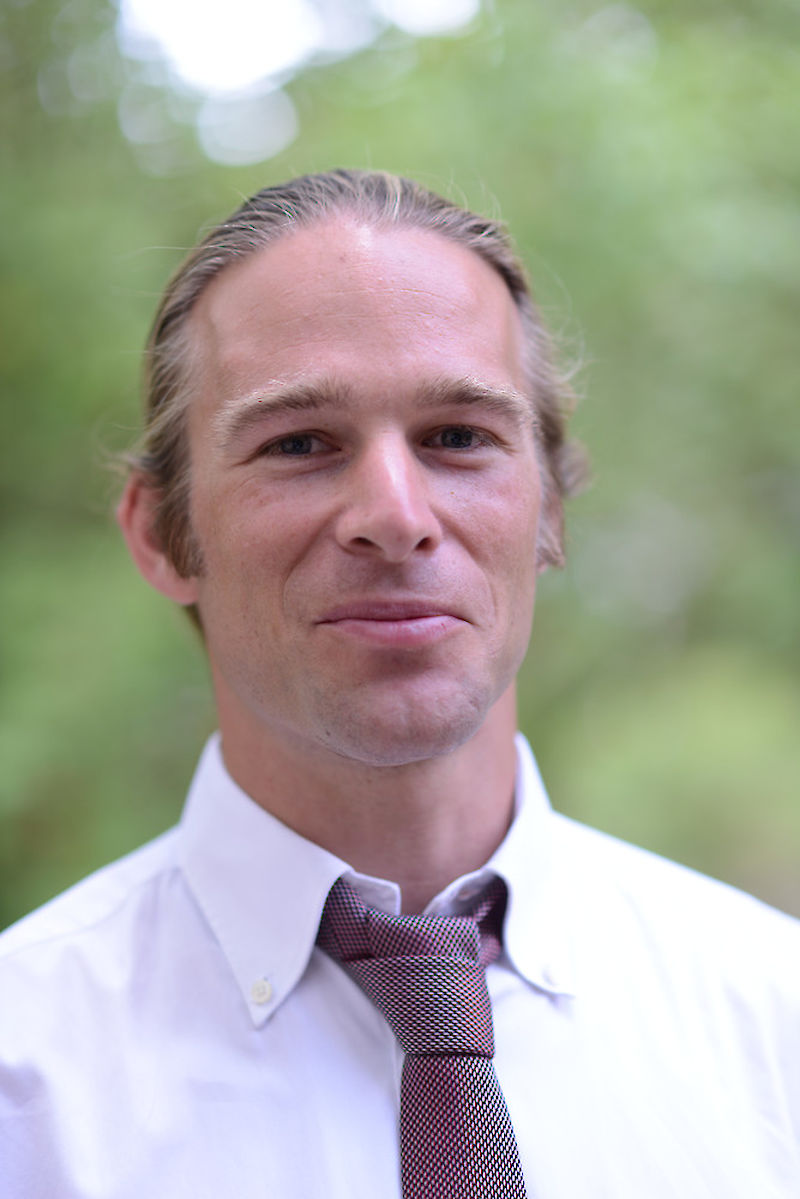Context: CRISPR/Cas9 gene scissors

The CRISPR/Cas9-System as used for biotech applications consists of only a few components. One is the protein Cas9 which always has to be present. It functions as a pair of scissors that can cut DNA. Additionally, there is the guide RNA, a variable component that directs the Cas9 protein to a specific sequence within a genome where it makes the cut. The guide RNA can be modified thereby reprogramming the Cas9 for a new target sequence. The recognition of target sequences via the guide RNA follows the simple rules also found in DNA: DNA consist of the components A, G, C and T. In a DNA double-strand, A-T or G-C are always positioned opposite to each other and form contacts. Thus, knowledge of a gene’s sequence is the only prerequisite for targeting it by CRISPR/Cas. Depending on the system used, the gene may be cut, or alternatively activated or deactivated without actually changing the genetic material.
After the cut comes the repair
After the DNA is cut, it is repaired within the cell. Two competing mechanisms exist: in the most straightforward case, the free ends are reconnected. This often results in small errors that can destroy a gene. Alternatively, a repair template, in other words a DNA fragment with the same or similar sequence, can be employed to repair the double-strand break. This mechanism can be utilised to insert “new” genetic material at a specific site, or to correct a defective gene.
In principle, producing a plant specifically modified by CRISPR/Cas is relatively easy. First, the adapted CRISPR/Cas system has to be delivered into the plant. This is commonly done using Agrobacterium, which is naturally able to transfer parts of its genetic material to plant cells. This genetic material is replaced by the CRISPR/Cas system. Every cell of a plant is totipotent. In other words, a complete organism can be regenerated from every cell. Thus, I can cut pieces of leaf or stem from a plant, treat them with my bacteria, and then attempt to breed plants, complete with shoot and roots, from these small pieces. The CRISPR/Cas components are then produced by the plant cells themselves, thus modifying the target sequence in the genetic material. Finally, individuals carrying the desired modification are selected from the regenerated plants.
Specificity is crucial for human application
Different approaches have to be taken to employ the CRISPR technology for treatment of human diseases. There are numerous promising reports indicating that genetic diseases may more appropriately be treated with CRISPR or even cured. Duchenne muscular dystrophy is one example of an incurable and terminal disease caused by a defect in a single gene. In affected mice, scientists tried to correct this defect using a CRISPR construct. Even if the correction of the gene only took place in a specific proportion of the cells, this was sufficient to considerably enhance survival of the mice. Similar approaches for humans are currently being reviewed by regulatory agencies and are eagerly awaited by patients with currently incurable, genetic diseases.
But CRISPR can also cause so-called “off target” effects. These are other, undesired changes to the genetic material due to additional cuts at sites that are similar to the actual target sequence. This is not a very big deal when we modify an organism as part of basic research. We don’t completely check the genome of the modified plant. If a product is intended for use in agriculture, for example, which currently remains prohibited in Germany, it would have to undergo further testing. The bottom line is that additional, unintended changes cannot be entirely ruled out. On the other hand: Consider the effects of traditional breeding - thousands of genes from various genomes are mixed in genetic crosses. It is impossible to entirely predict the consequences. When a targeted modification is introduced, and potentially accompanied by one or two additional modifications, I personally believe this to be far more controlled and controllable than any crossbreeding. However, this remains a question of faith.
This article appeared in print as part of the series "Context", in which researchers of Martin Luther University explain recent topics in their respective fields, providing background and contextual information.
About
Contact:
Institut of Biology / Genetics
Phone: +49 345 55-26345
Send email

